The Monaco Grand Prix was red-flagged after a collision blocked the track on the first lap of the race on this day 30 years ago.
The interruption helped Ayrton Senna secure his third win on the streets of the Principality, and break clear from rival Alain Prost in the fight for the 1990 world championship.
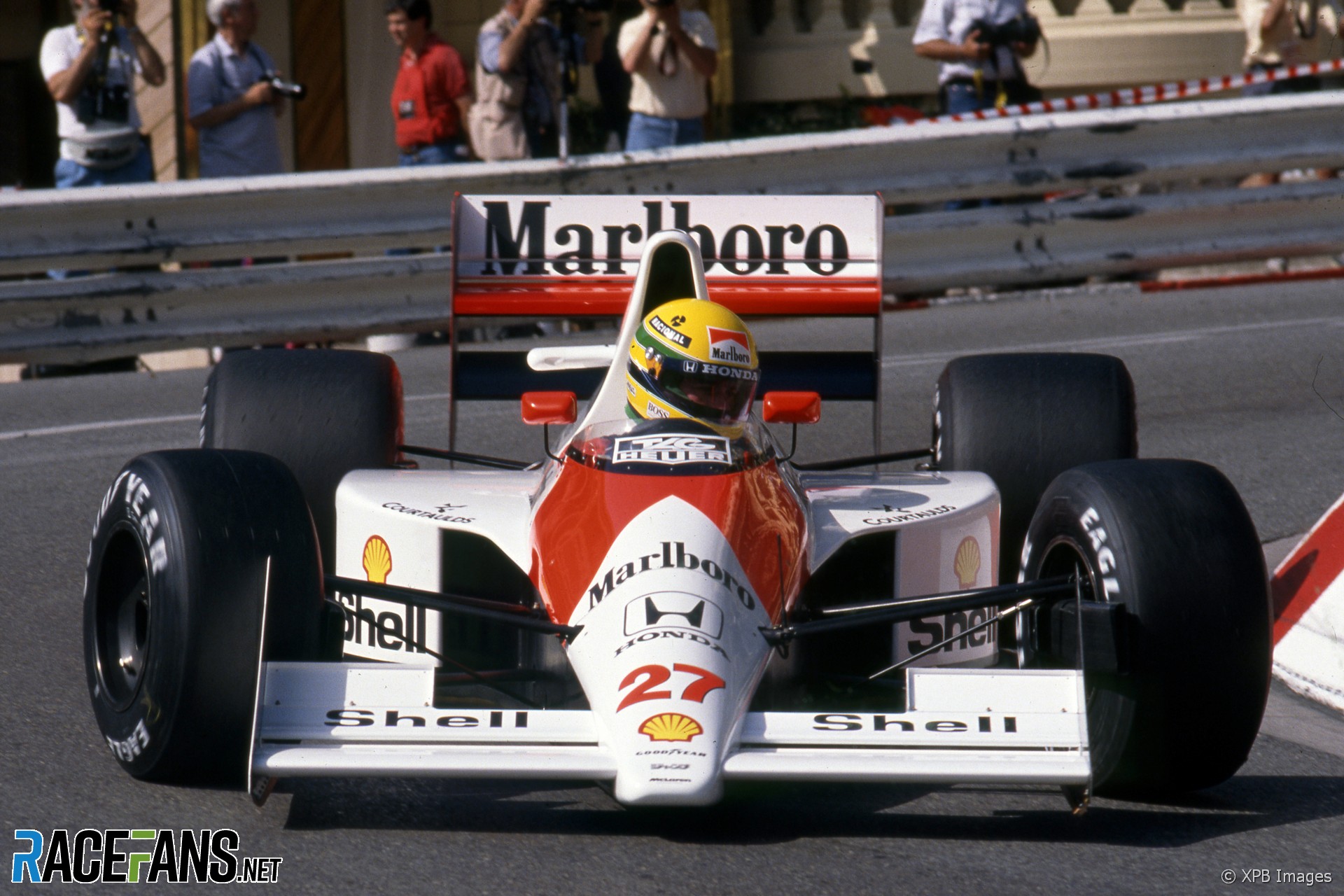
Senna arrived in Monaco with a slender, one-point lead over Prost’s Ferrari and Gerhard Berger in the other McLaren. Riccardo Patrese was fourth, counting just the nine points he’d scored by winning the previous round at Imola.
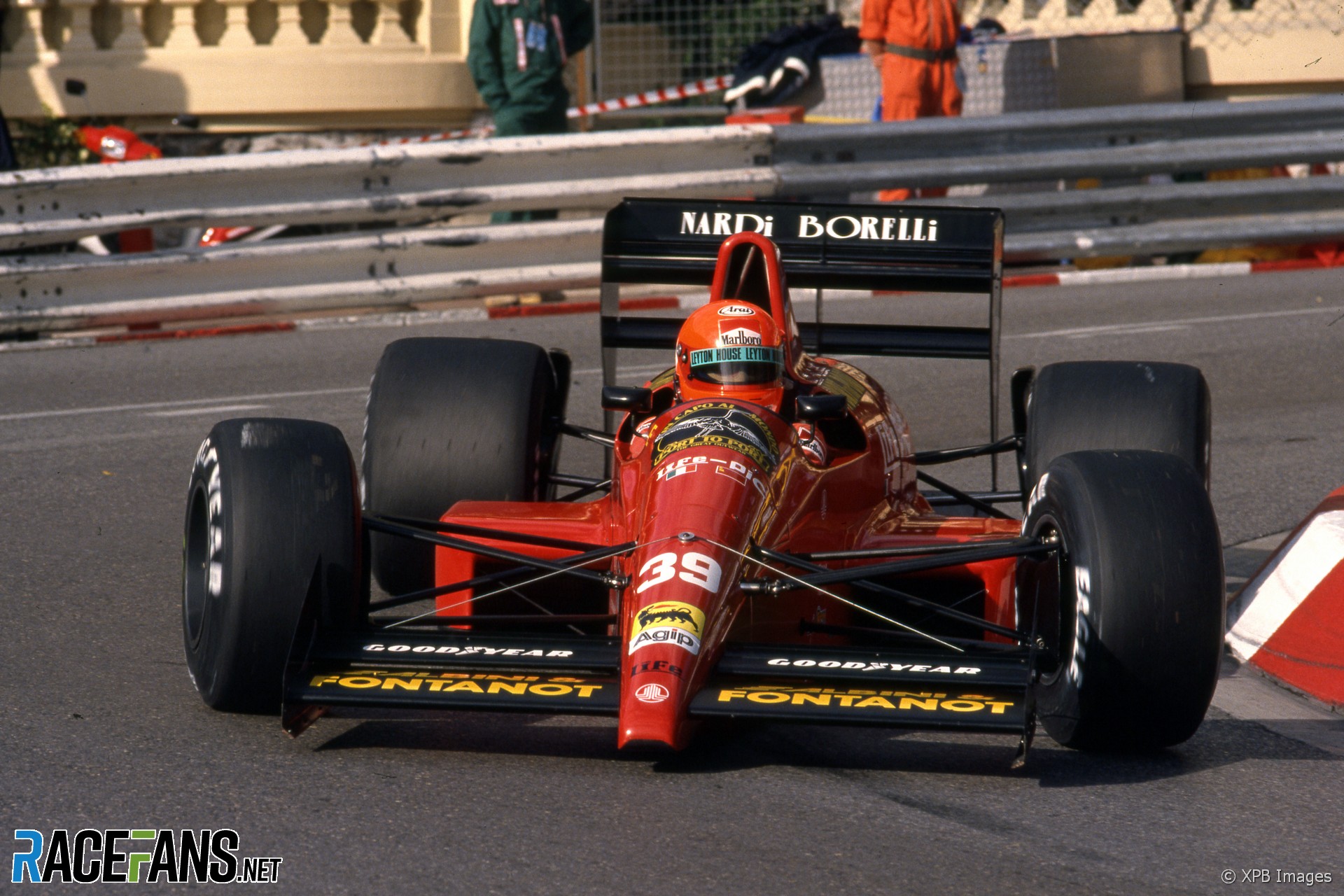
A massive entry of 35 cars contested the 26 places on the grid. Nine cars therefore contested a separate pre-qualifying session, the top four from which would join the other 26 for the rest of the race weekend.
Bruno Giacomelli unsurprisingly failed to make the cut in the sole Life entry. He did manage to cover eight laps, which was more than the car had managed in any of its previous outings, but its unusual W12 engine failed during one qualifying effort.
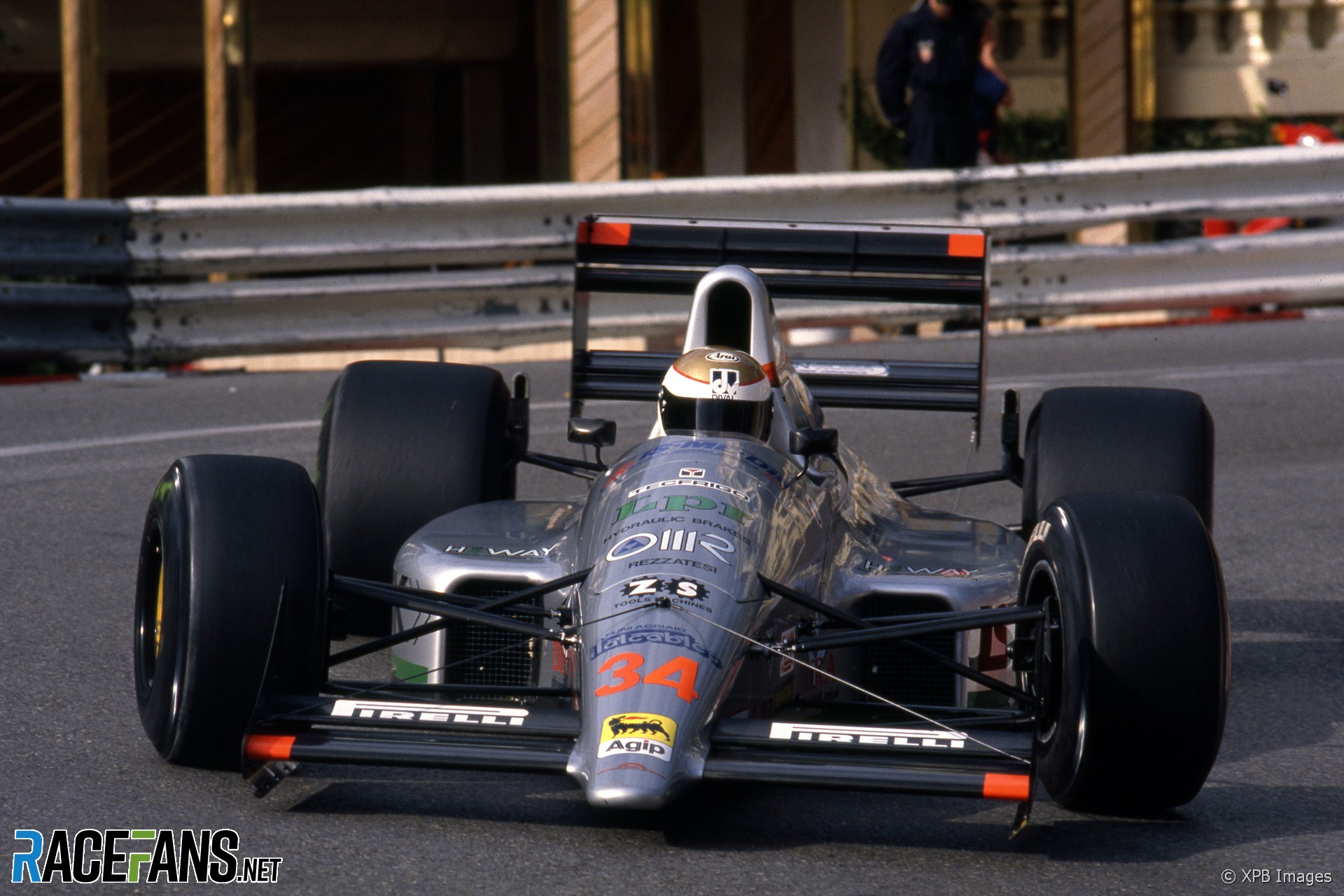
Claudio Langes failed to pre-qualify for all 14 of his grand prix appearances in 1990. On this occasion an oil leak stopped his Eurobrun. His best time was nearly five seconds slower than team mate Roberto Moreno’s, but almost six seconds quicker than Bertrand Gachot’s Coloni-Subaru and nearly eight seconds quicker than Giacomelli.
AGS pair Yannick Dalmas and Gabriele Tarquini also failed to progress beyond pre-qualifying. The latter missed the cut by less than four tenths of a second after suffering a suspension failure on his JH25.
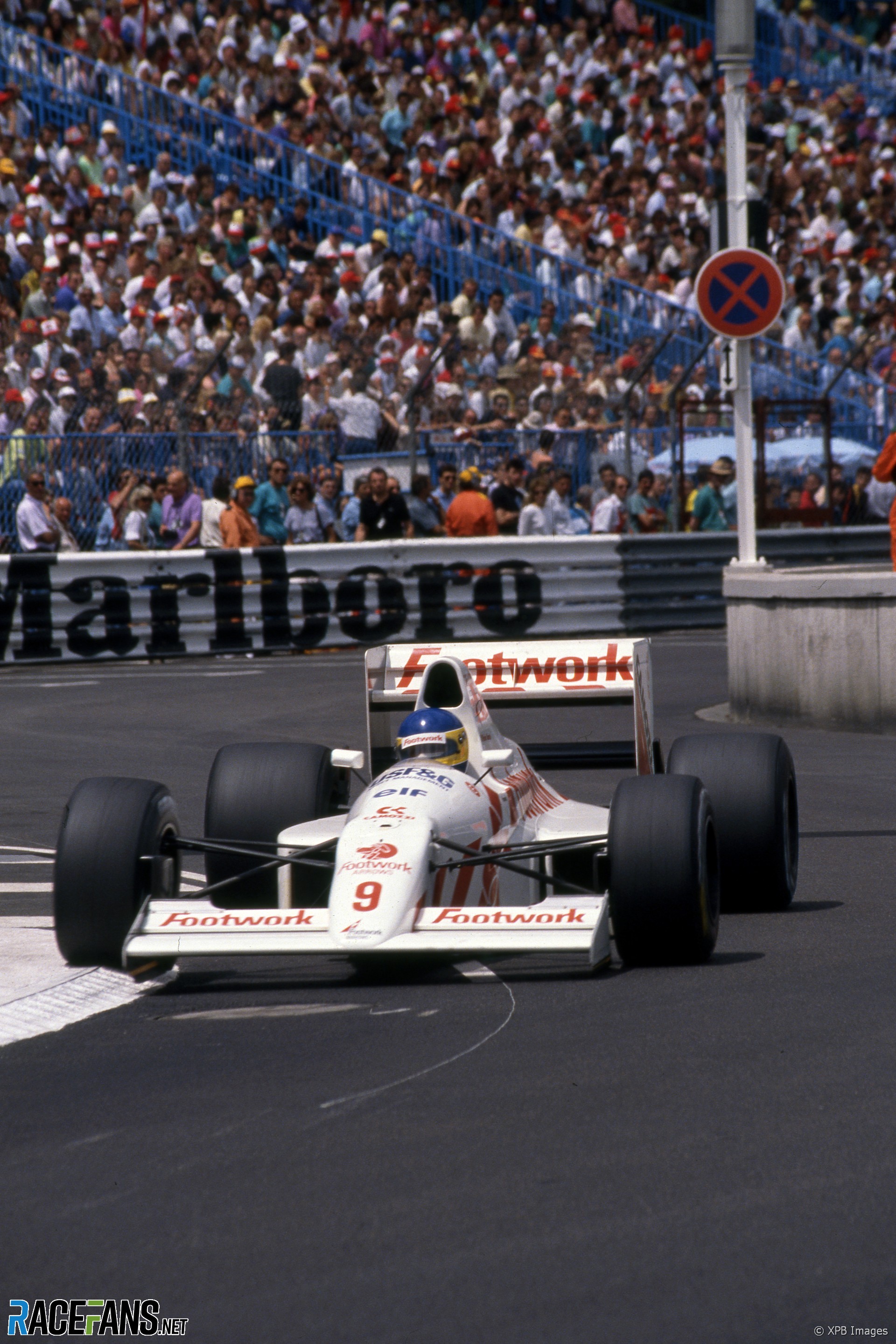
The grid was decided over two timed sessions. Moreno provisionally qualified the Eurobrun on Thursday, but slipped to last as the track improved two days later. Similarly Olivier Grouillard, 18th in the sole Osella on Thursday, failed to qualify after driveshaft breakages scuppered his Saturday running.
Mauricio Gugelmin also failed to qualify his Leyton House. The last non-qualifier was a surprise. Michele Alboreto, who had nearly won the race for Ferrari five years earlier, missed out on a grid place by one tenth of a second following clutch and battery problems in his Arrows.
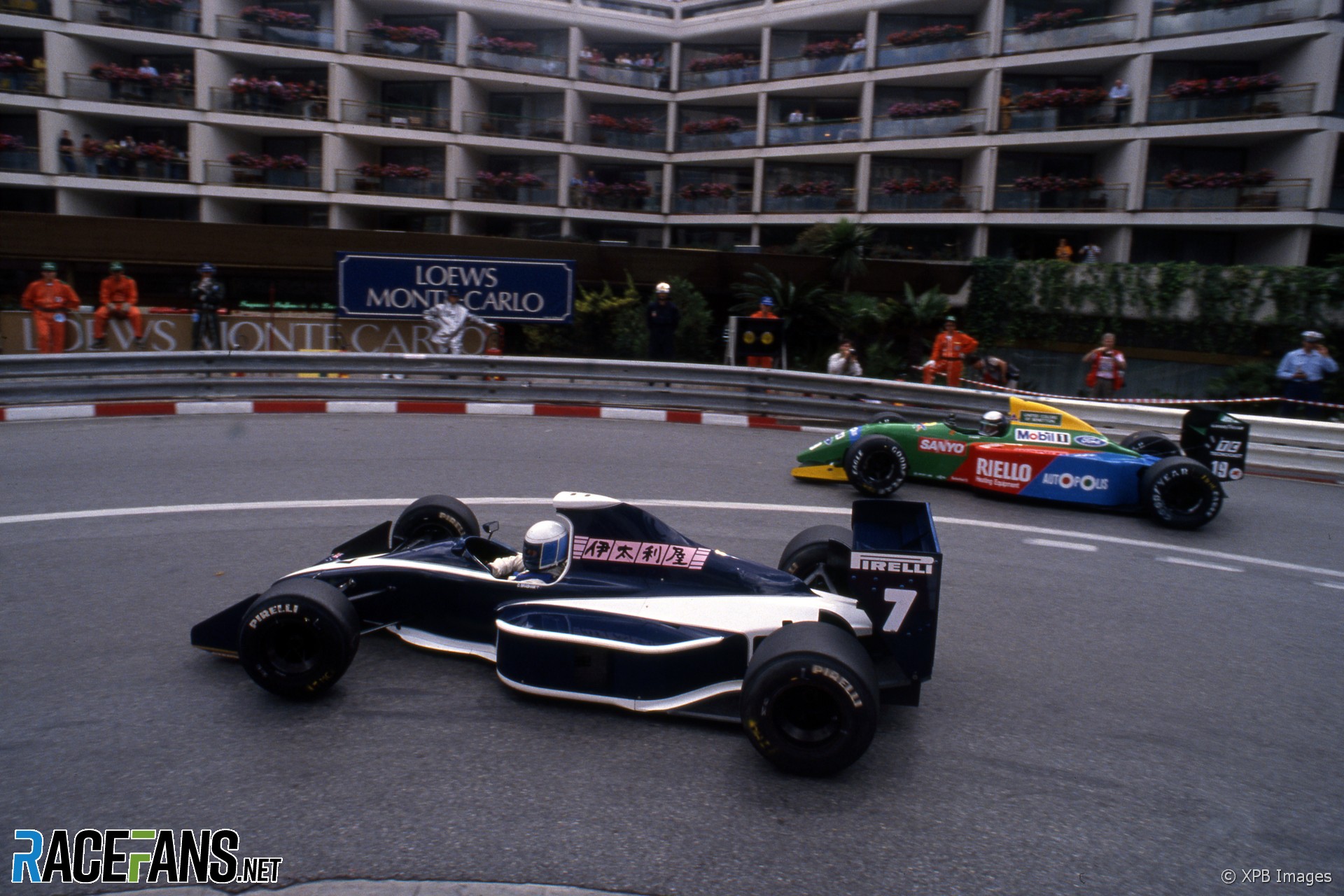
David Brabham did qualify, meaning a Brabham driver in a car bearing the family name started a race for the first time since his father bowed out of Formula 1 at the end of 1970.
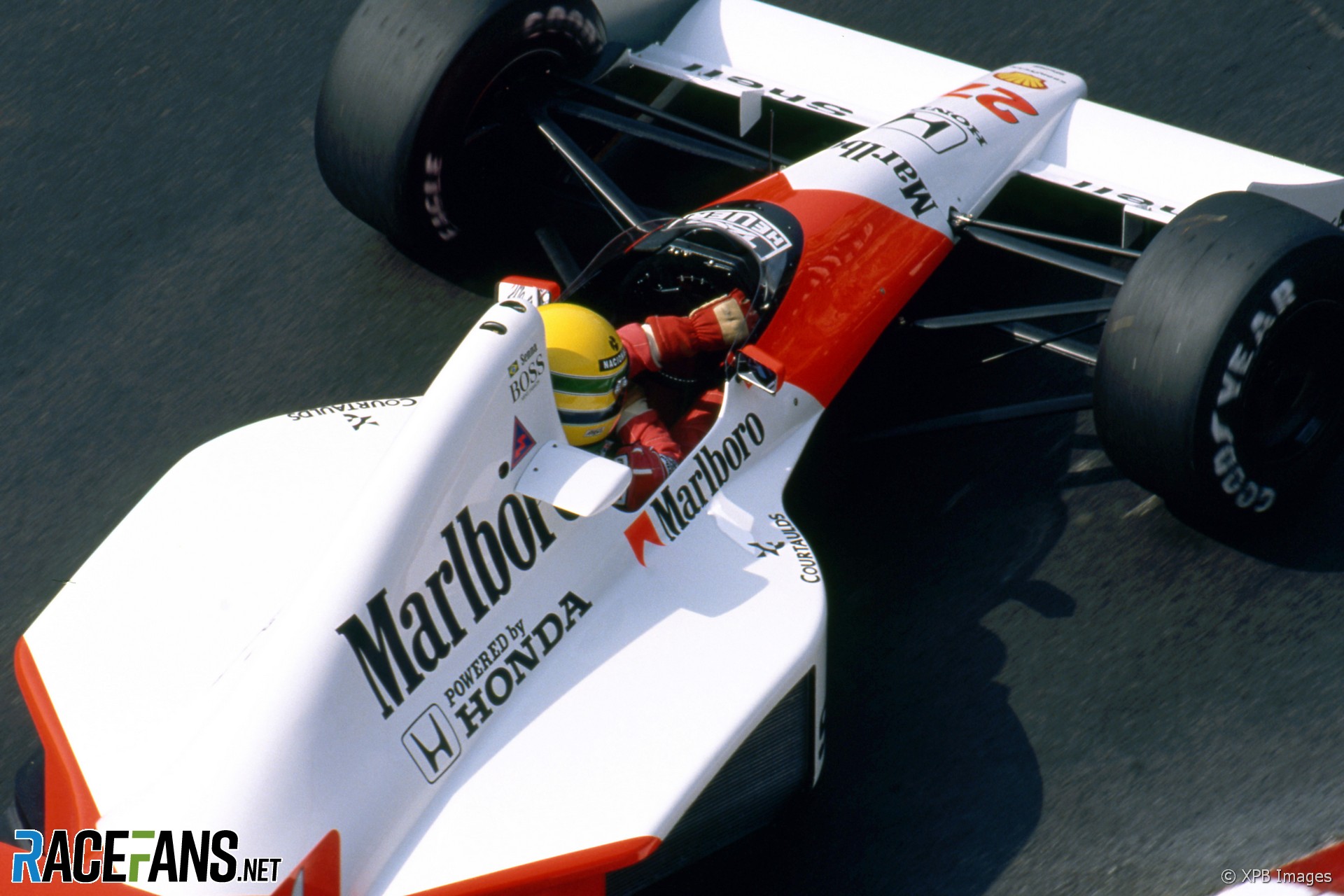
Senna claimed his 44th career pole position and third in a row in Monaco. Prost joined him on the front row, bumping the much-fancied Tyrrell of Jean Alesi back to third place by two-hundredths of a second. Riccardo Patrese’s Williams made it four different cars in the top four.
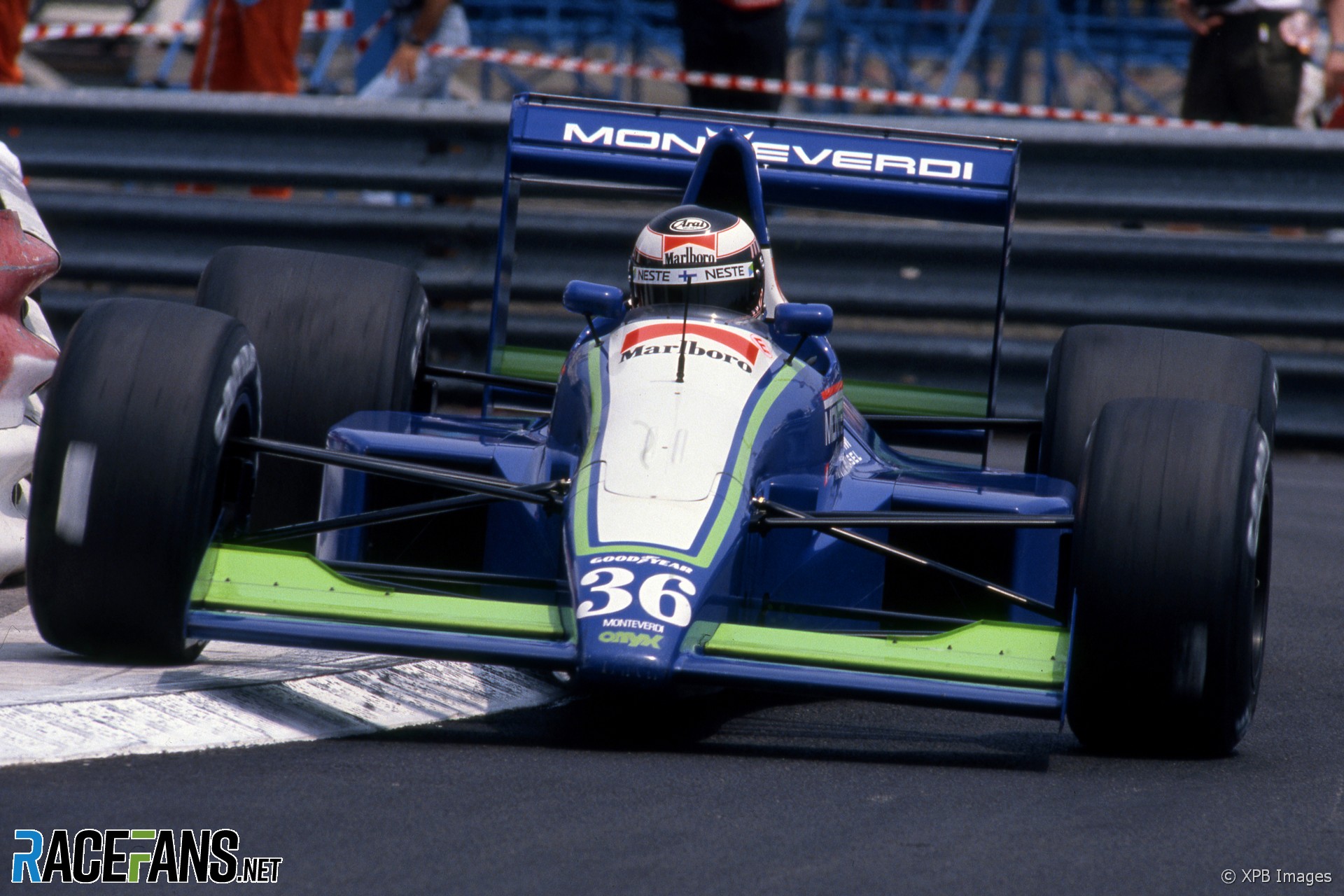
The last spot on the grid went to JJ Lehto’s Onyx.
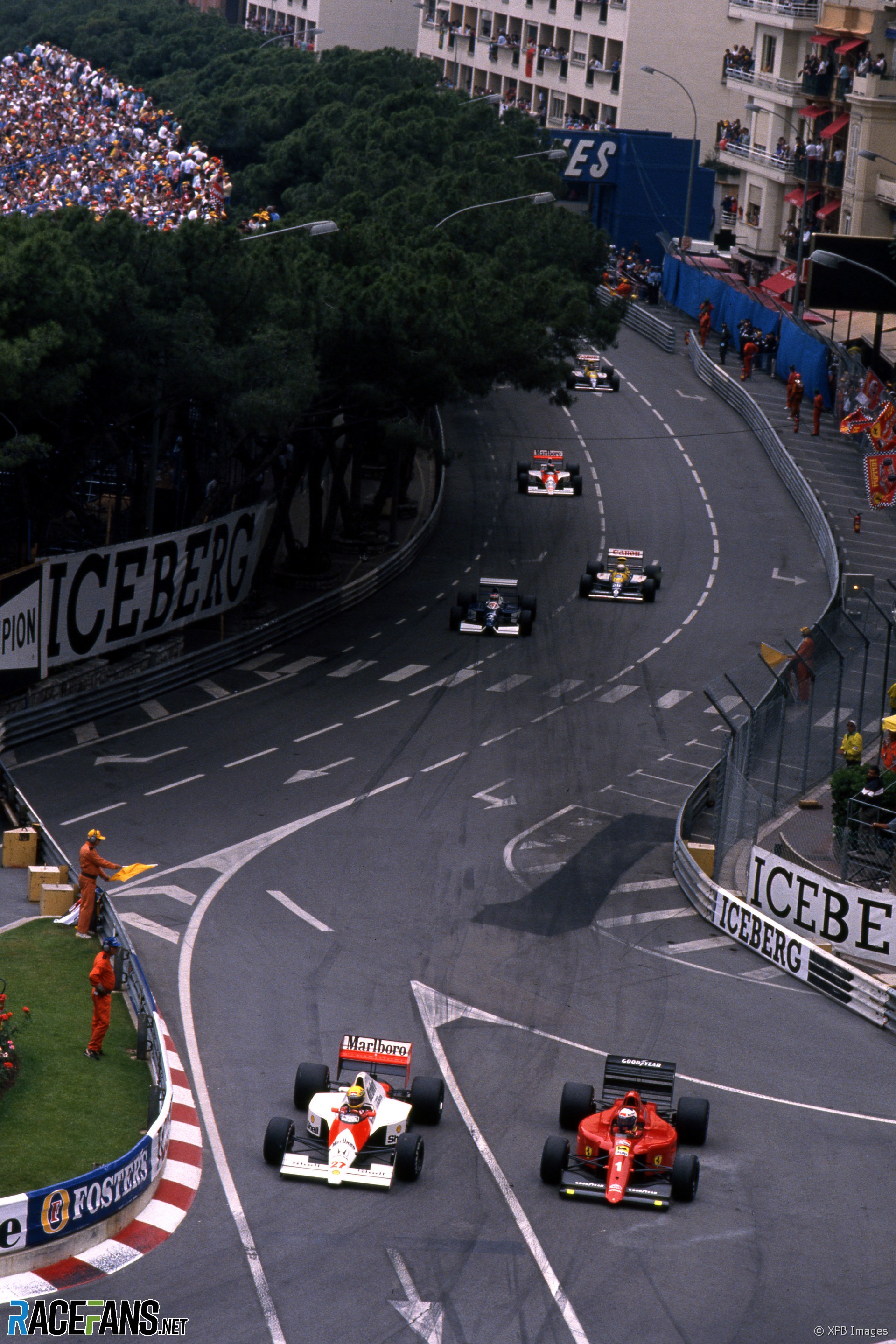
Senna held his lead from Prost at the start. Then as they reached the Mirabeau Alesi sprang a surprise attack on the Ferrari and stole second place with the same verve he had shown while battling Senna for the lead at Phoenix earlier in the year.
However his hard work was undone. Gerhard Berger optimistically attempted to follow him through but succeeded only in knocking Prost into a spin, blocking the track. The race was red-flagged and restarted.
That gave Prost a second chance to keep Alesi behind. This time when they reached the Mirabeau he kept the door firmly closed, obliging Alesi and the rest to follow him around the opening laps.
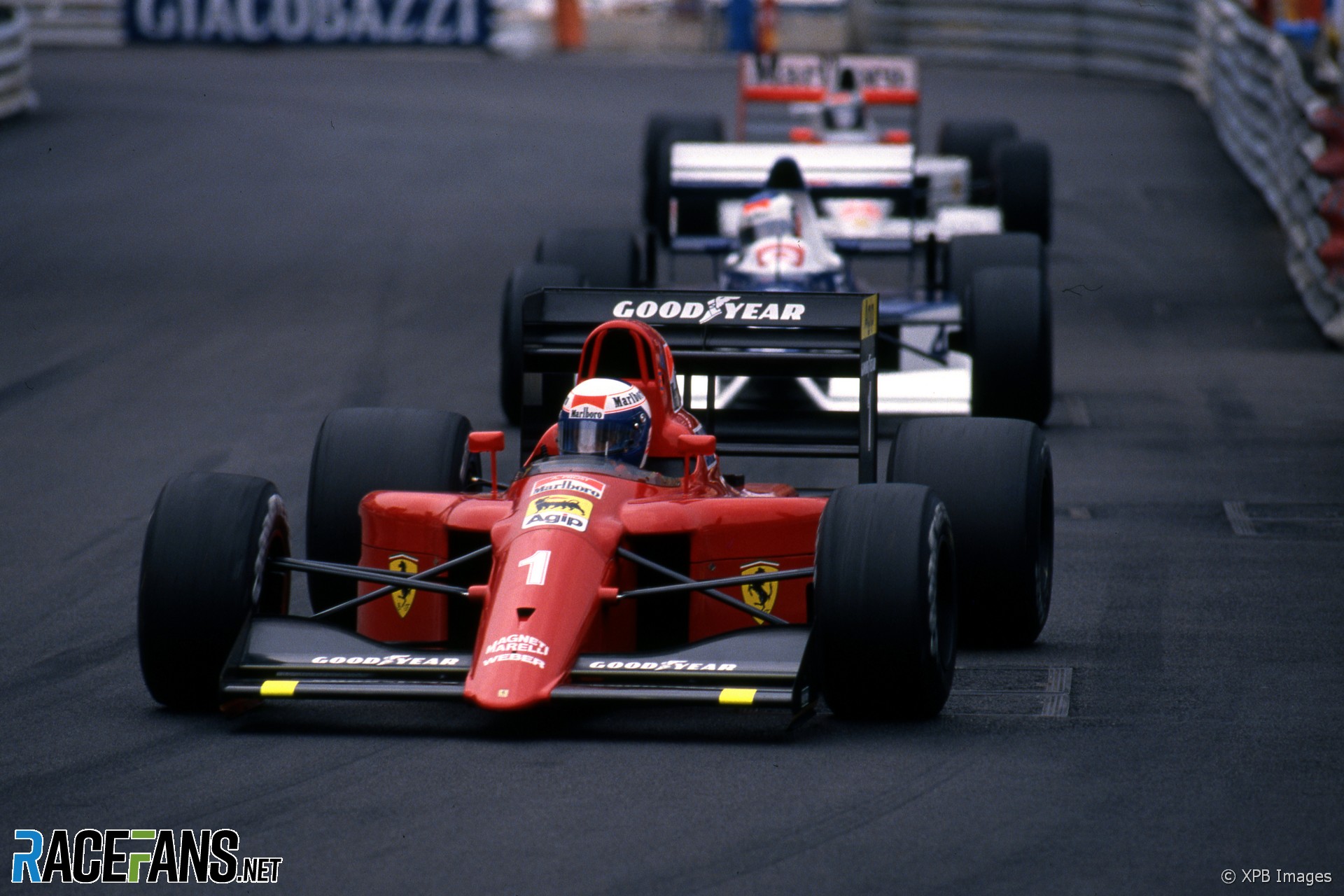
Alesi’s nimble, Pirelli-shod Tyrrell promised to be just the thing around Monaco’s narrow streets, but Senna made good his escape while Prost kept Alesi behind. The situation finally changed after 30 laps, when Prost’s electronics failed.
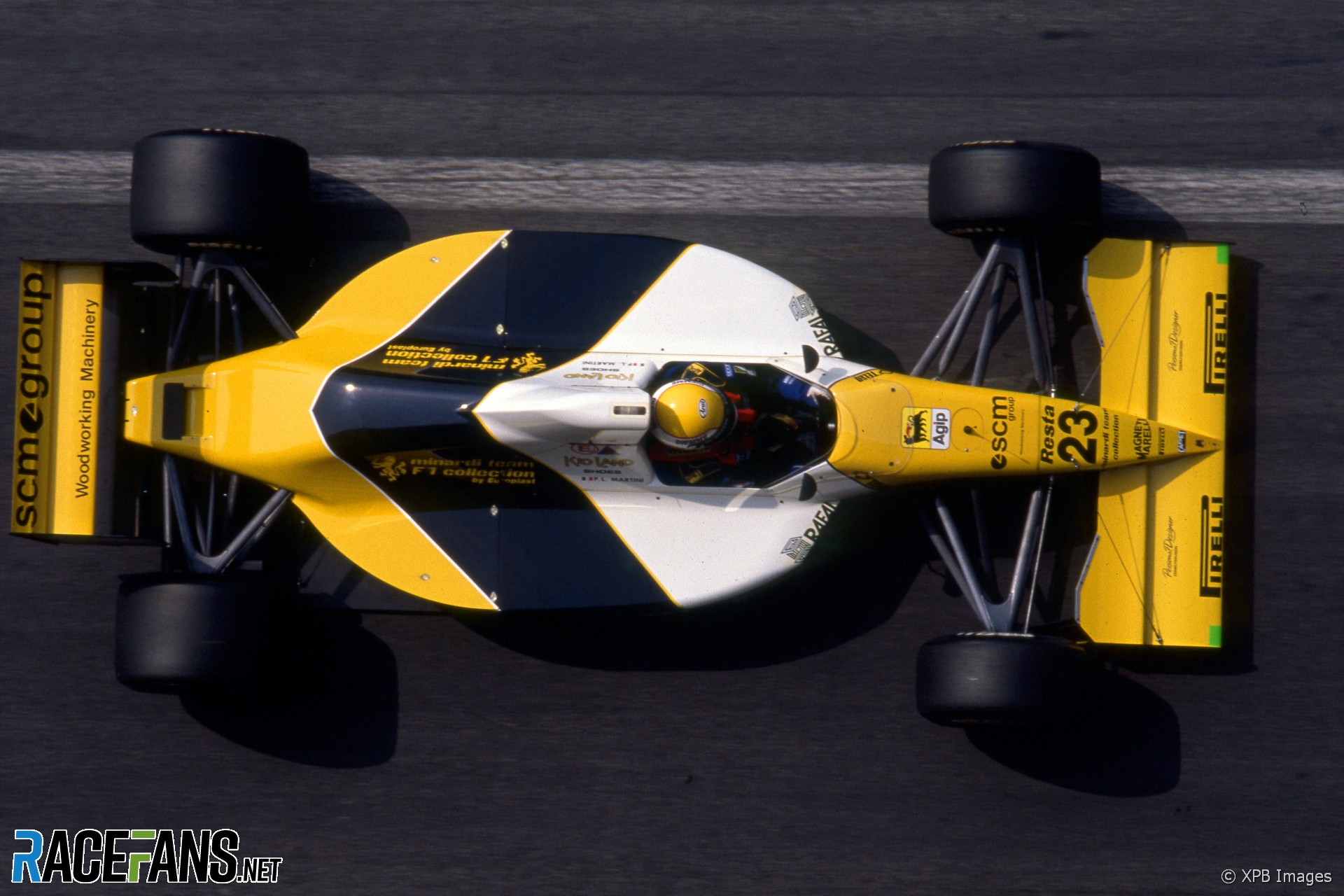
Half the field was out before half-distance. Prost joined Pierluigi Martini, who qualified his Minardi an encouraging eighth but lasted just seven laps before his electrics failed. Both Brabhams went out too, including Stefano Modena, who had taken an unlikely podium at the track 12 months earlier.
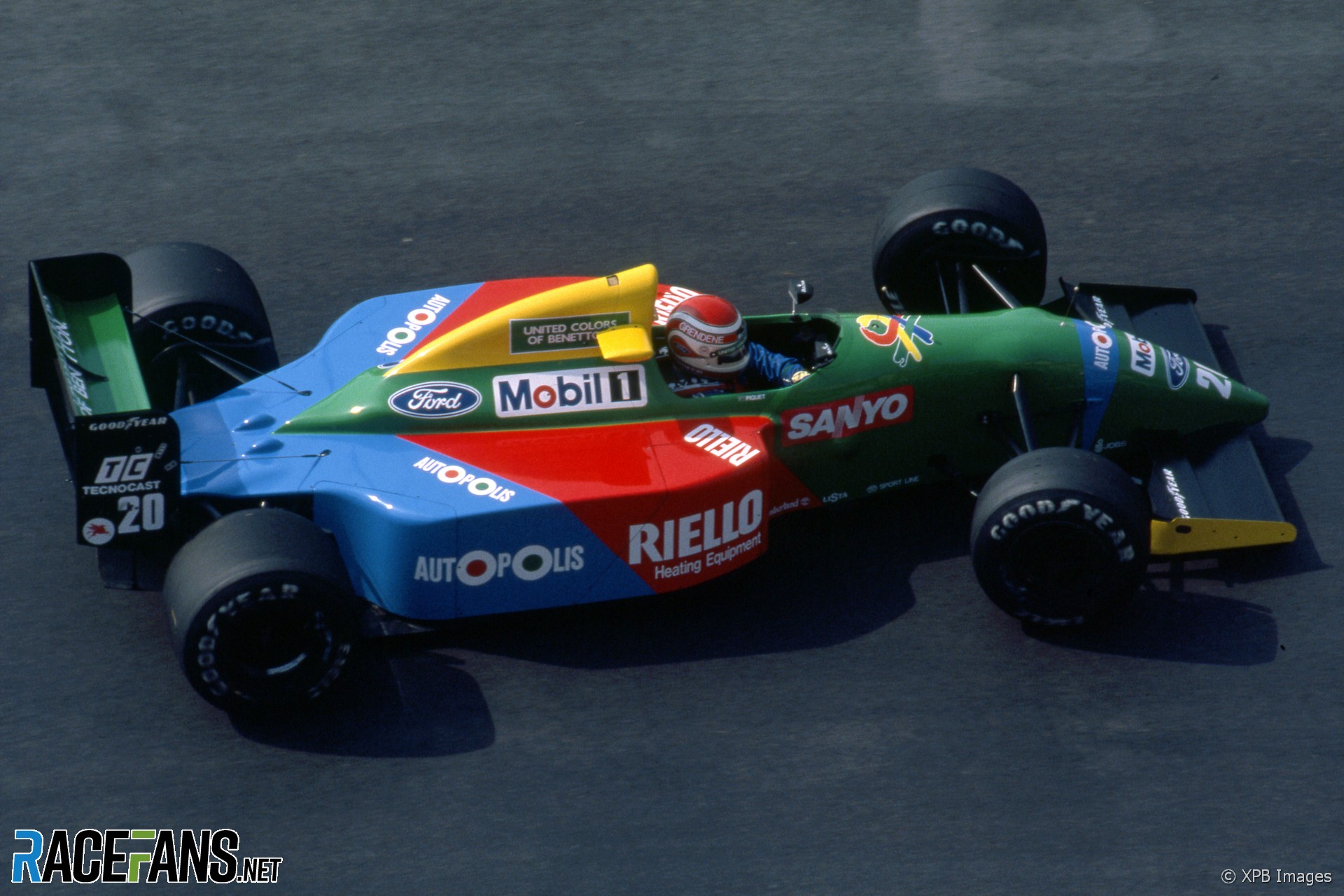
Three-times world champion Nelson Piquet, never a fan of Monaco, spun out of seventh place on lap 34. He was given a push-start and disqualified under a regulation which had only just been introduced. Senna had been push-started after his controversial collision with Prost at the previous year’s race at Suzuka.
Bottled up behind Thierry Boutsen’s sixth-placed Williams, Nigel Mansell got increasingly frustrated, and eventually hit the Williams at the chicane. That forced him into the pits for a new nose.
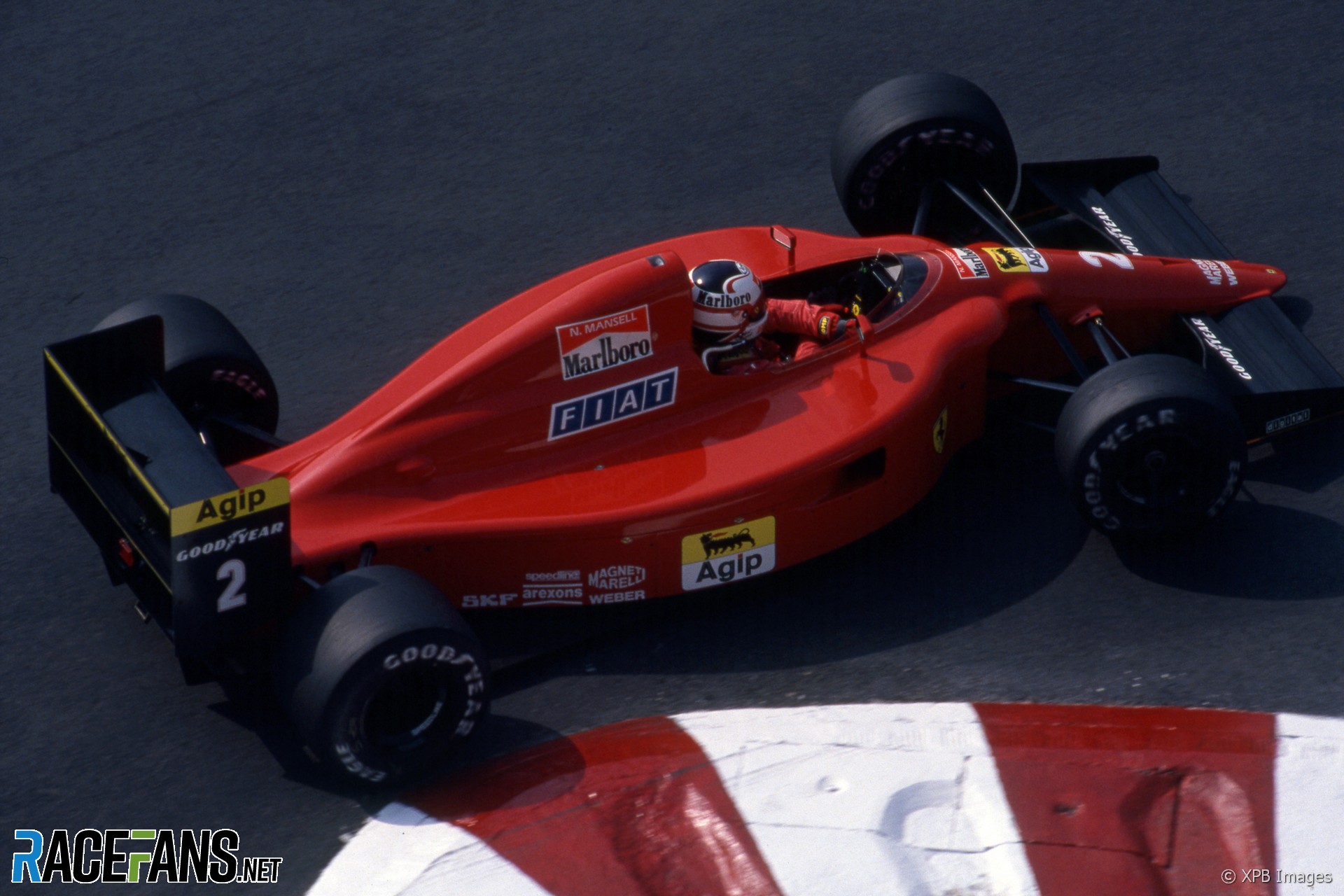
Back on track, Mansell worked his way up into the points, the Ferrari’s paddle-shift semi-automatic gearbox, a novelty at the time, proving a boon on a track which required constant changes of gear. He finally made it past Boutsen for fourth place on lap 54, the Williams now suffering engine problems. But Mansell’s recovery effort was scuppered when his electrics packed up on the 63rd lap.
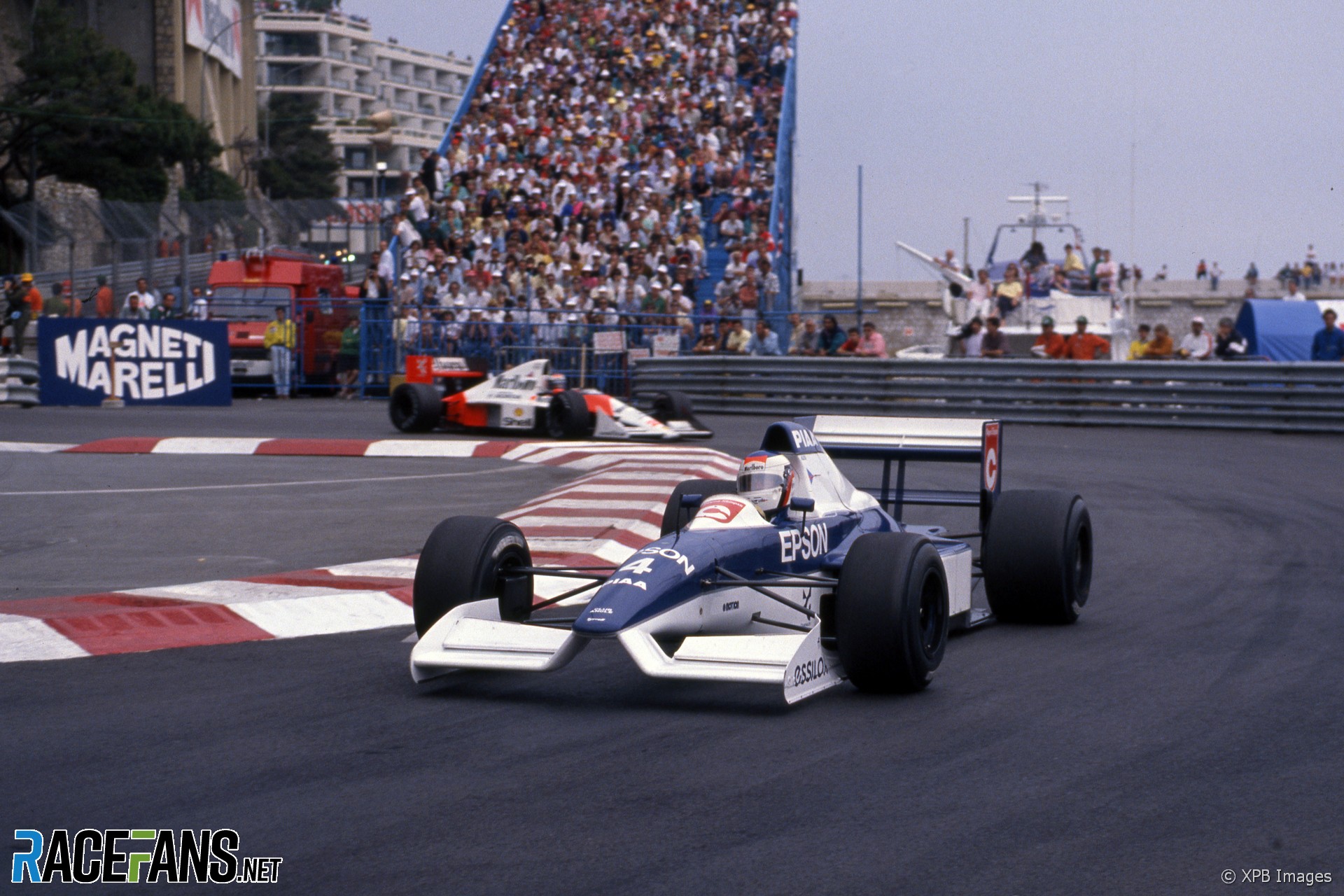
Finally freed of Prost, Alesi left Berger behind and went after Senna, though the McLaren driver was already 17 seconds up the road and continued to pull ahead despite Alesi’s efforts.
But with 11 laps to go, Senna began to feel a loss of power from his Honda V10, and backed off. His progress wasn’t helped by a near-miss with Derek Warwick’s spun Lotus at the chicane. As the final laps ticked down Alesi drew around two seconds closer each time they passed the pits.
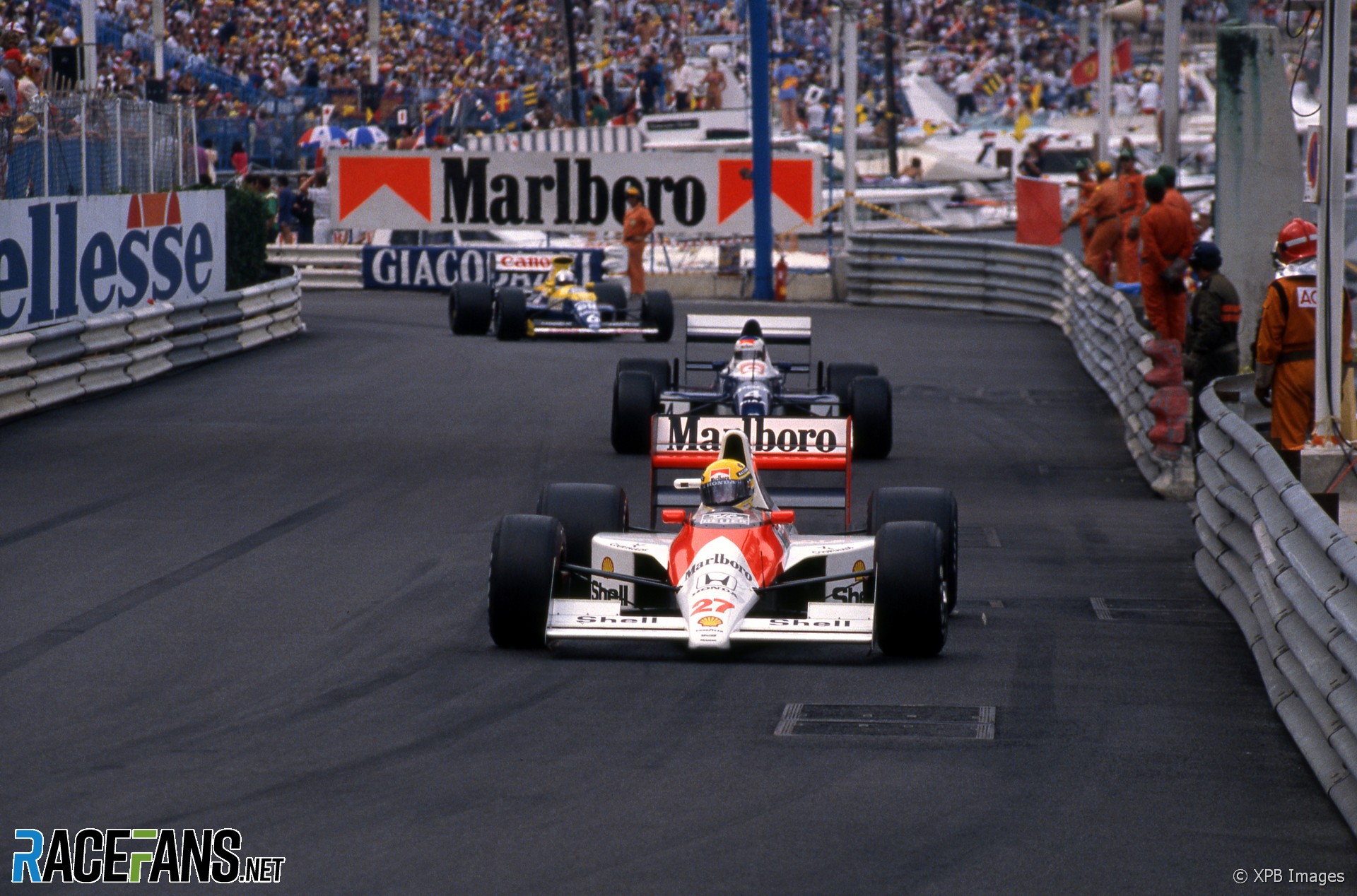
Senna’s lead collapsed over the final run to the flag, Alesi drawing tantalisingly close, the lapped Boutsen following them. Senna lost 4.7 seconds over the penultimate lap alone, and Alesi was just a second behind when the chequered flag fell. Without all the time lost behind Prost, how much harder could he have pushed the McLaren?
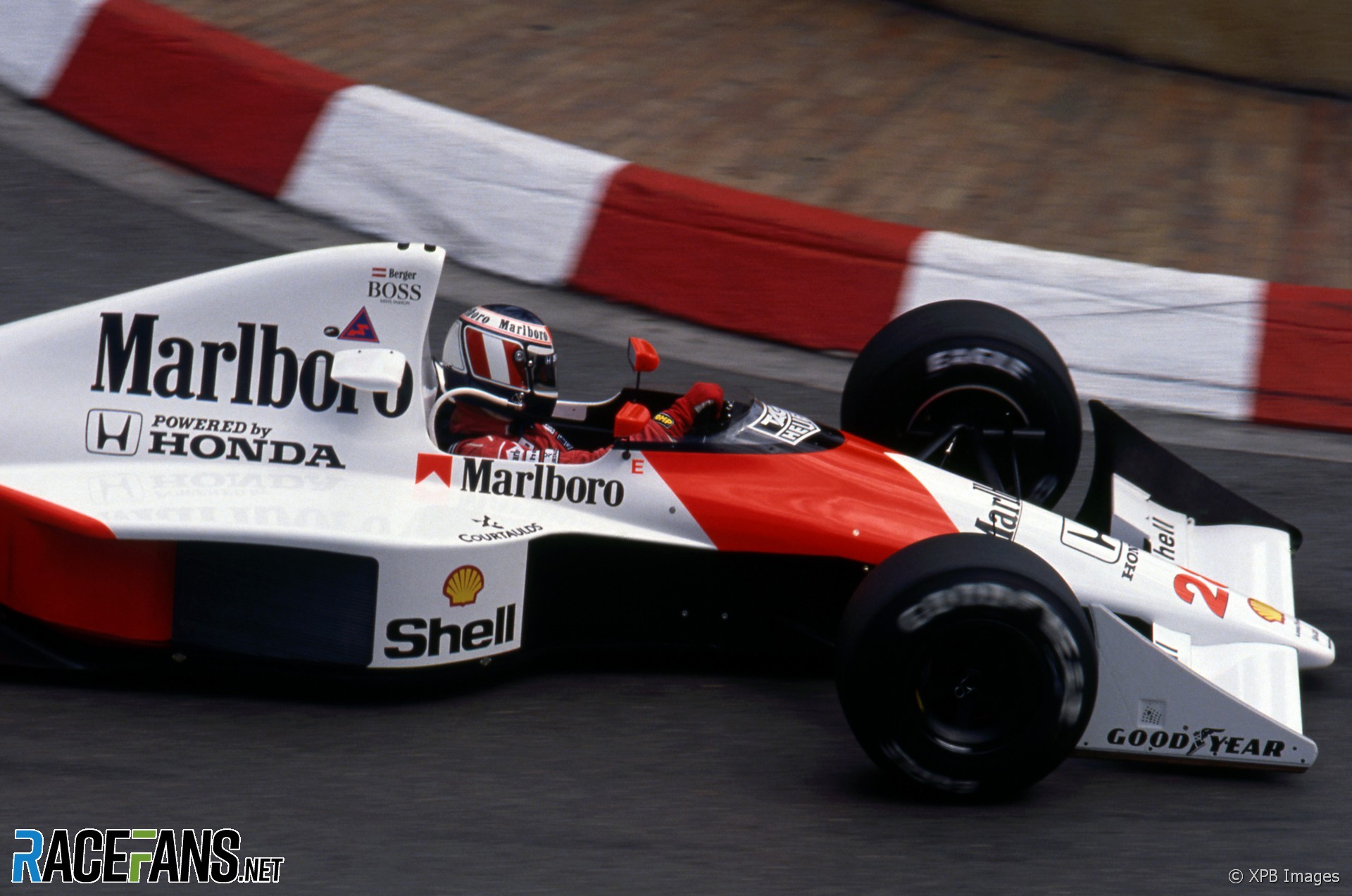
Berger continued his run of podium finishes for McLaren after 78 uncomfortable laps in a car which was still being modified to accommodate his 1.85-metre frame.
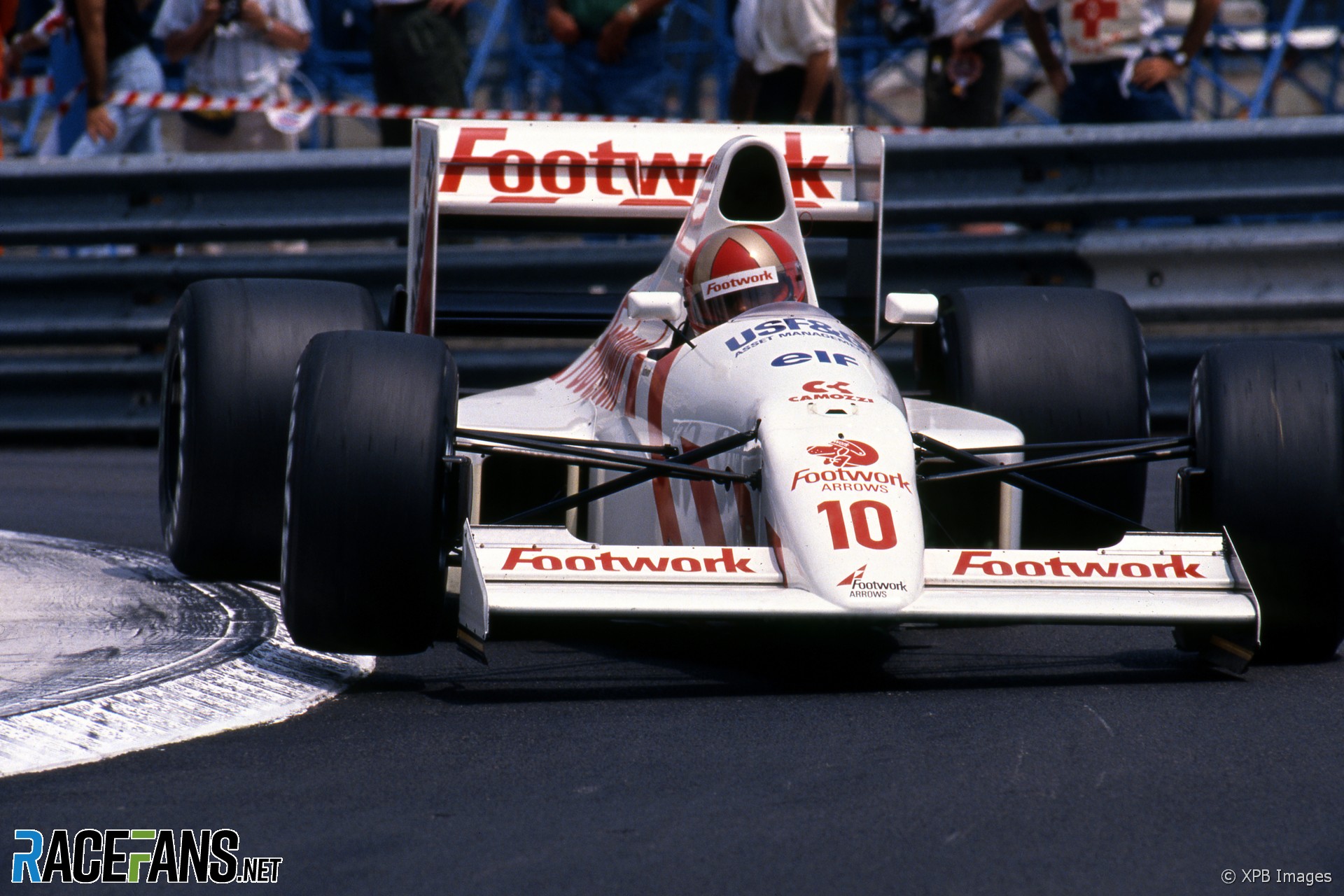
Alex Caffi picked up two points for Arrows in fifth place. The final points-paying position was decided when the last two cars still running collided. Eric Bernard’s Lola tangled with Gregor Foitek’s Onyx, and Bernard emerged to claim sixth. Foitek was the classified finisher, the 20th car to have stopped.
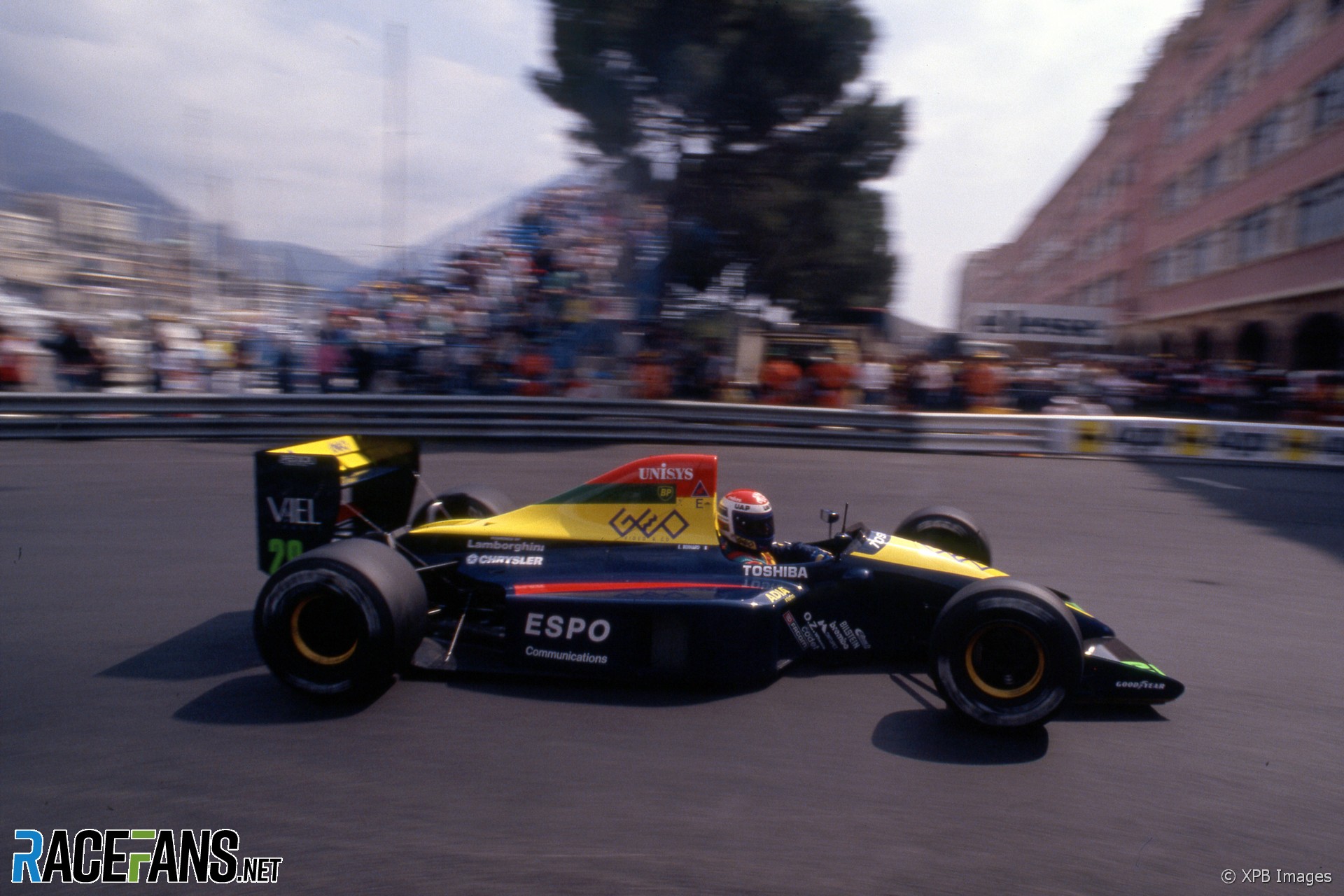

Senna’s win at Monaco 30 years ago was not his most memorable victory at the track, but it continued the his undefeated run at the circuit which lasted until his death in 1994.
F1 history
- Netflix reveals first trailer for new “Senna” miniseries
- How you rated F1’s 12 sprint races so far – and why two outscored the grand prix
- Alonso set to become F1’s oldest driver for more than 50 years
- From ‘Flying Pig’ to Senna’s heroics: The short, incredible history of Toleman
- From farcical to fantastic: Formula 1’s 14 title-deciding Japanese races ranked





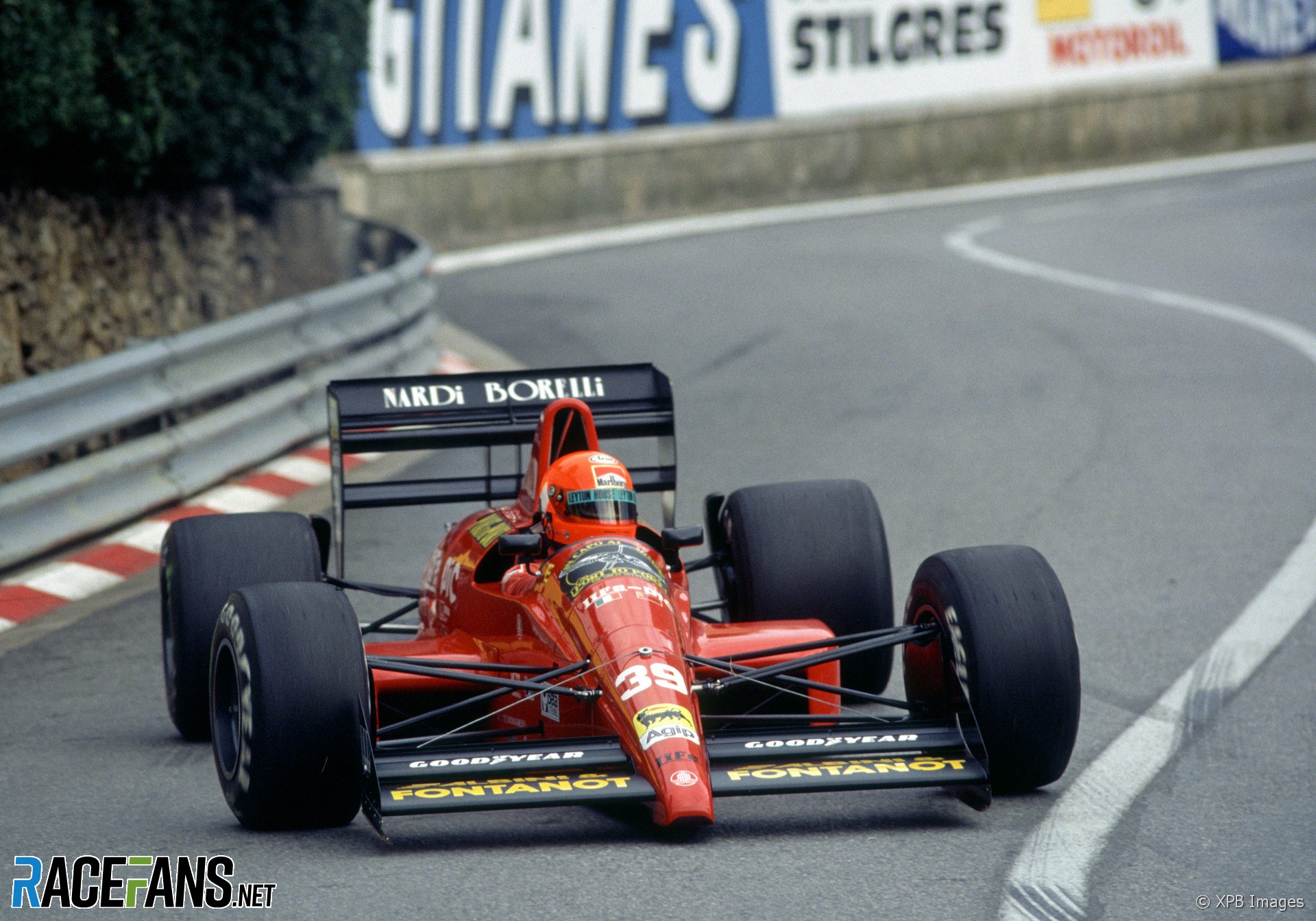

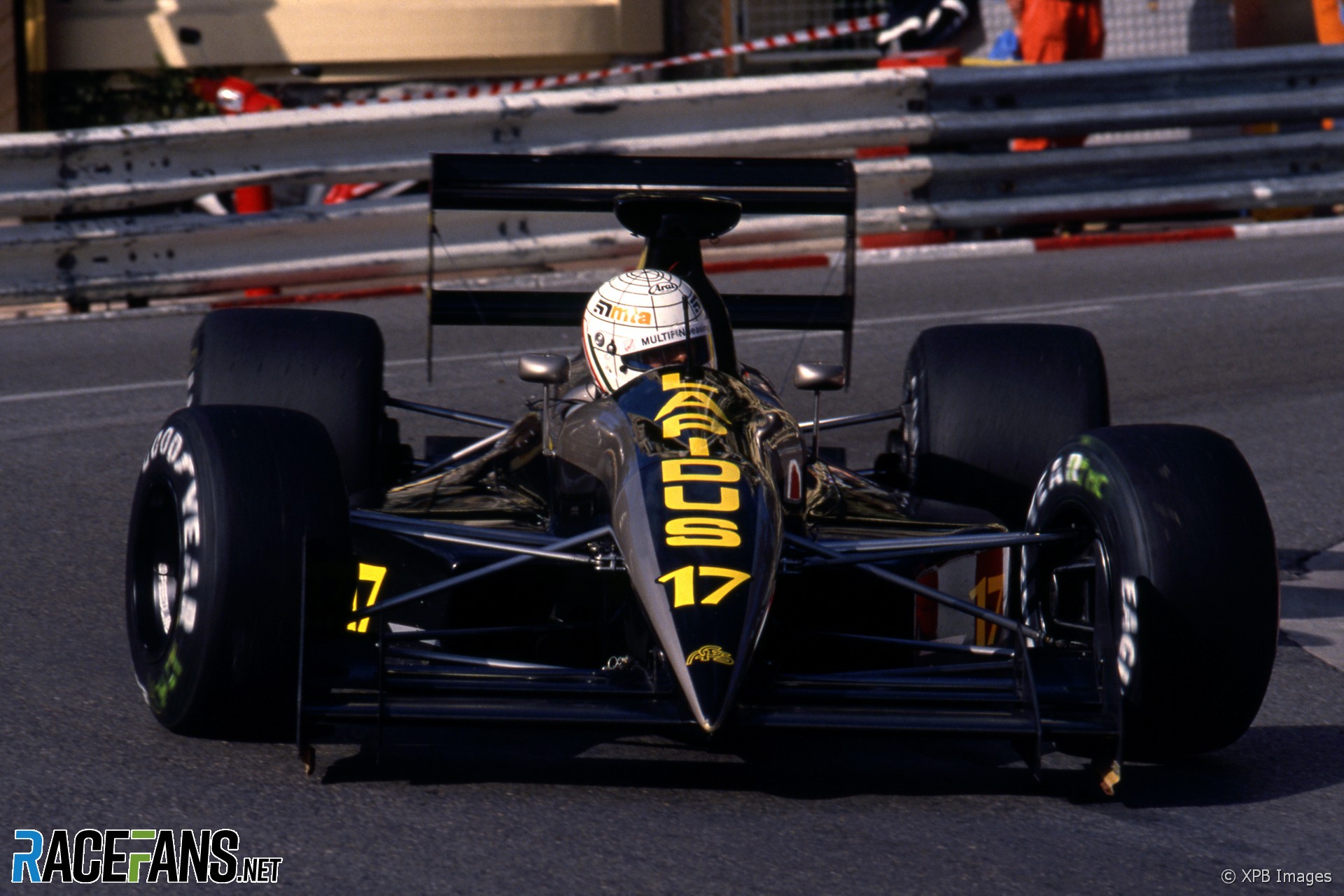
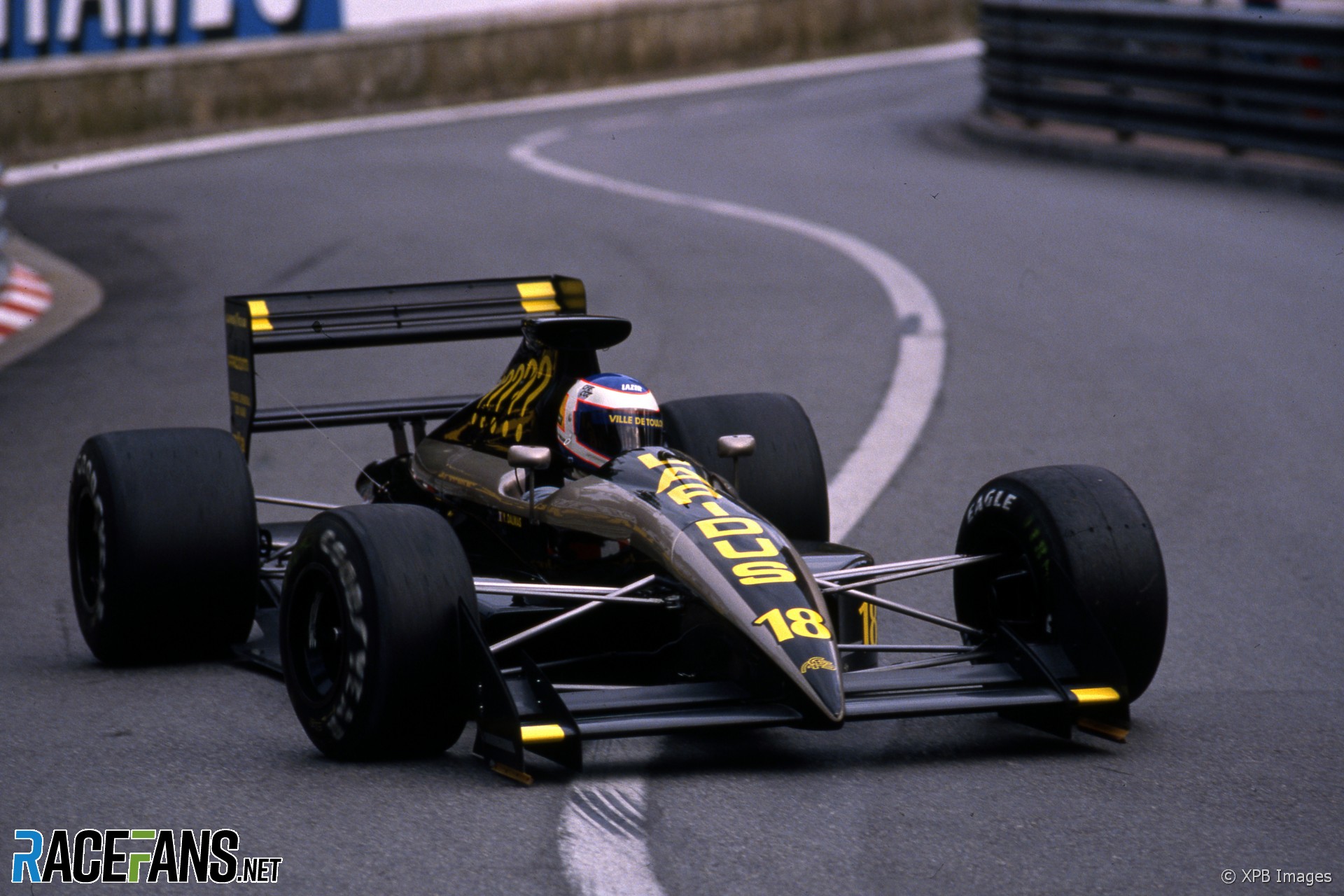
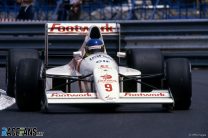
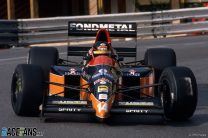
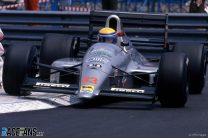

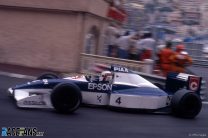
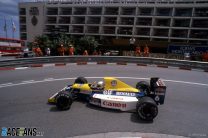

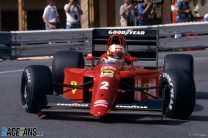
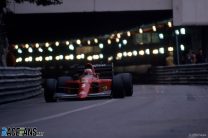

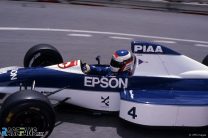
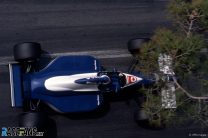
Euro Brun (@eurobrun)
27th May 2020, 13:05
That Life car’s nose looks so narrow, it actually looks impossible that someone’s legs could be in there!
So glad that this car was so horrendously slow, as a crash at high speed could have been brutal.
GeeMac (@geemac)
27th May 2020, 15:19
@eurobrun For such a terrible car, it’s actually got an interesting back story! If I recall correctly, the car was an evolution of once which was being prepared for an F1 entry by a team called FIRST (which the now late Richard Divila was involved in briefly), but that entry was woefully under-financed. When Divila had a look at the finished car (the FIRST version), he saw it had major flaws in it (including on the suspension pick-up points, the fact that the chassis had been overcooked and the steering column was unsafe). Divila reportedly said the car was good for nothing other than as an “interesting flowerpot”. He told the FIRST team management that the car was awful, warned prospective drivers against stepping into it and took legal action to stop his name from being mentioned in connection with it!
Euro Brun (@eurobrun)
27th May 2020, 13:20
Also, I know it was 1990 (I refer to it as back before safety was invented), but its still amazing just how many people are right behind that barrier at Mirabeau!
j.bergmann
27th May 2020, 14:37
u mean the last photo? that is first piscines chicane (after tabac)
Euro Brun (@eurobrun)
27th May 2020, 17:49
No sorry, after reading the article I went back and watched the race! Tabac is also crazy!
Fer no.65 (@fer-no65)
27th May 2020, 13:21
I saw that Ferrari at the MoMA in New York.
It didn’t feel out of place at all. It’s truly amaizing to look at, up there with the Eagle, as the most beautiful F1 car ever in my opinion. That shape is what comes up in my mind when I think of Formula 1.
Though I have to say looking at the Benetton or the Minardi in particular, that grid was great looking. Even that Larrouse!
Jockey Ewing
27th May 2020, 14:53
These cars are very pretty, even many of the underdogs. Nice clean lines, and how they danced and fishtailed.
The rules and specifications can be infinitely complicated to close loopholes, but that will lead often even more complicated circumventings. And the many of those will be prohibited, maybe sometimes only to prevent some teams to entirely destroy their competition, what would look bad considering these developmental costs. Would it not be simpler to have a honest straight cost cap instead of complicated specifications, and ban the cheaters for life? To specify the fuel amount for a race distance and nothing more, instead of polling the consumption at some frequency and so on? And the cost cap should not mean that it’s a spec series, the only thing that may result in a BOP like detuning of some cars, that should be the amount of turbulent air it generates, otherwise they could apply any kind of safe designs. Sadly it’s likely hard to measure, even Einstein describes his journey in aerodynamics as “youthful folly”, he found many obscure and hard to explain phenomenons in fluid- and aerodynamics. Probably it could be measured at wind tunnels and under race conditions combined, collecting data based on sensors fitted onto the following cars. Even aeroplane engineers prefer simple shapes, because they atleast can calculate the effect of them some extent. So how can FIA and scrutineers police the cars and designs, if we often hear things like “we not yet understand the car/engine”, “we lack downforce/grip” even at the end of the seasons? Smaller teams often struggle with problems like these.
But it looks like as they delay the cost cap, and aero changes, many series will be converted to electrics (in a few years) before F1 will start to run it’s next engine specifications. Indy is maybe 10-15 seconds slower on the same road course, but I see many photos where those cars following eachother closely. So I’d say aero should not be allowed to become even more complicated, and the only field where balance of performance would not be too much artifical is punishing the designs for generating more dirty air than the others. As it was allowed previously aero engineers likely were rewarded to maximize it as a side mission of them.
Jose Lopes da Silva
27th May 2020, 23:13
Loved your comment – makes me want to study aero engineering, although it’s too late for that. Cheers
Jockey Ewing
28th May 2020, 20:18
Thank you, I used to read some comments too, and as I remember I agreed with most of yours too.
I think unless someone can afford the best universities it’s likely easier and better to learn by practice, gradually, empirically. Newey built many things as a child, and what prevents someone to build wonderful things if one turns out to be really talented? I guess wind tunnel hours are so important because effect of these compilcated aero elements are much more easily measured than calculated. They have good instincts and guesses and then they test them a lot.
Additionally I think F1 designs are too expensive now, the teams are bounded to using them, so getting used to a way cheaper formula would allow to change the ruleset way more often and with less resistance from the teams. Decades before F1 was way more random, and I think the drama that caused was quite needed and exciting. Today top cars rarely breaking down so, at the level of Mercedes even one ore two additional breakdown can be a title decider between the team’s two drivers. In terms of luck it’s not much more appealing or fair than having the reliability of the seventies.
OllieJ (@olliej)
27th May 2020, 17:40
Brilliant retrospective feature! Really enjoyed reading it
obster
27th May 2020, 18:29
That Tyrrell with Alesi was great!
Gorka
27th May 2020, 19:10
Great times! I agree the cars looked fantastic. I can remember that optimistic attempt from Berger at Mirabeau live on tv. He was on a mission not to lose contact with Senna in the championship and misjudged horribly. More please!
bobec
27th May 2020, 19:17
Thank you for this.
It’s amazing how dated concept-wise the McLaren looks compared to the Tyrrell. Even the d@mn Footwork looks more advanced than the MP4/5B. Low profile, low nose, pullrod front suspension.
frood19 (@frood19)
27th May 2020, 22:22
There’s a pretty astonishing video of alesi hurling that tyrell around in the free practice session of this race – it was posted on twitter recently. It’s exactly how F1 cars should be driven, total commitment, no margin for error but the sense that it could all go horribly wrong at any moment. I really wish this was possible with today’s cars but they’re too heavy and the tyres have the wrong slip angle. I do kind of want F1 to be the quickest formula but when push comes to shove, I’d prefer it to be harder to drive, and for a style like alesi’s in this video to be the quickest way round the track, even if it was 10 seconds per lap slower.
https://mobile.twitter.com/1990sF1/status/1264604960198668294
Unicron (@unicron2002)
27th May 2020, 22:32
This was 2 years before I found F1 so it’s great to read this mini race report. All new ro me, and I’m surprised I’ve never heard about Alesi’s drive here, sounds like he was on it.
Also, how have I never seen that AGS before? How cool does that look?! You can’t beat that Ferrari though.
MEF
28th May 2020, 16:40
That Brabham car looked stunning